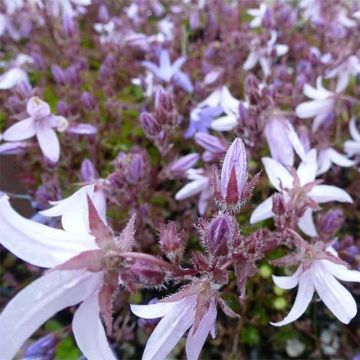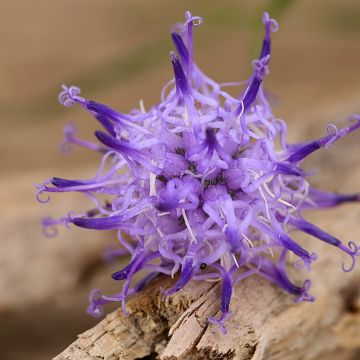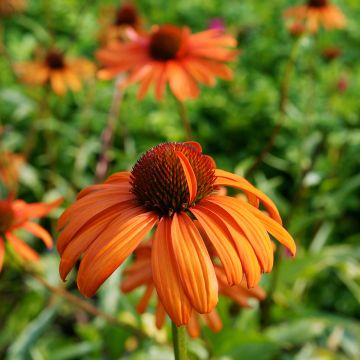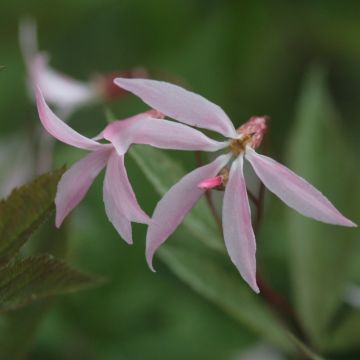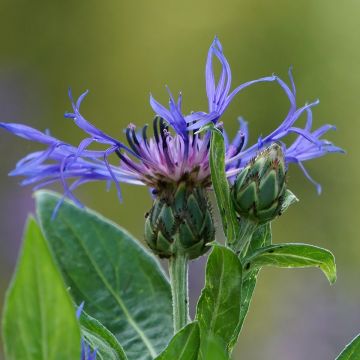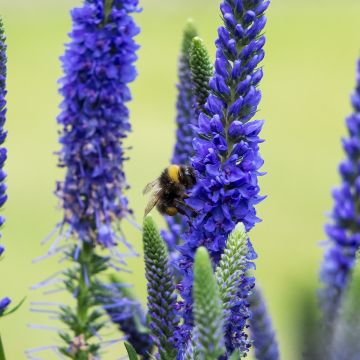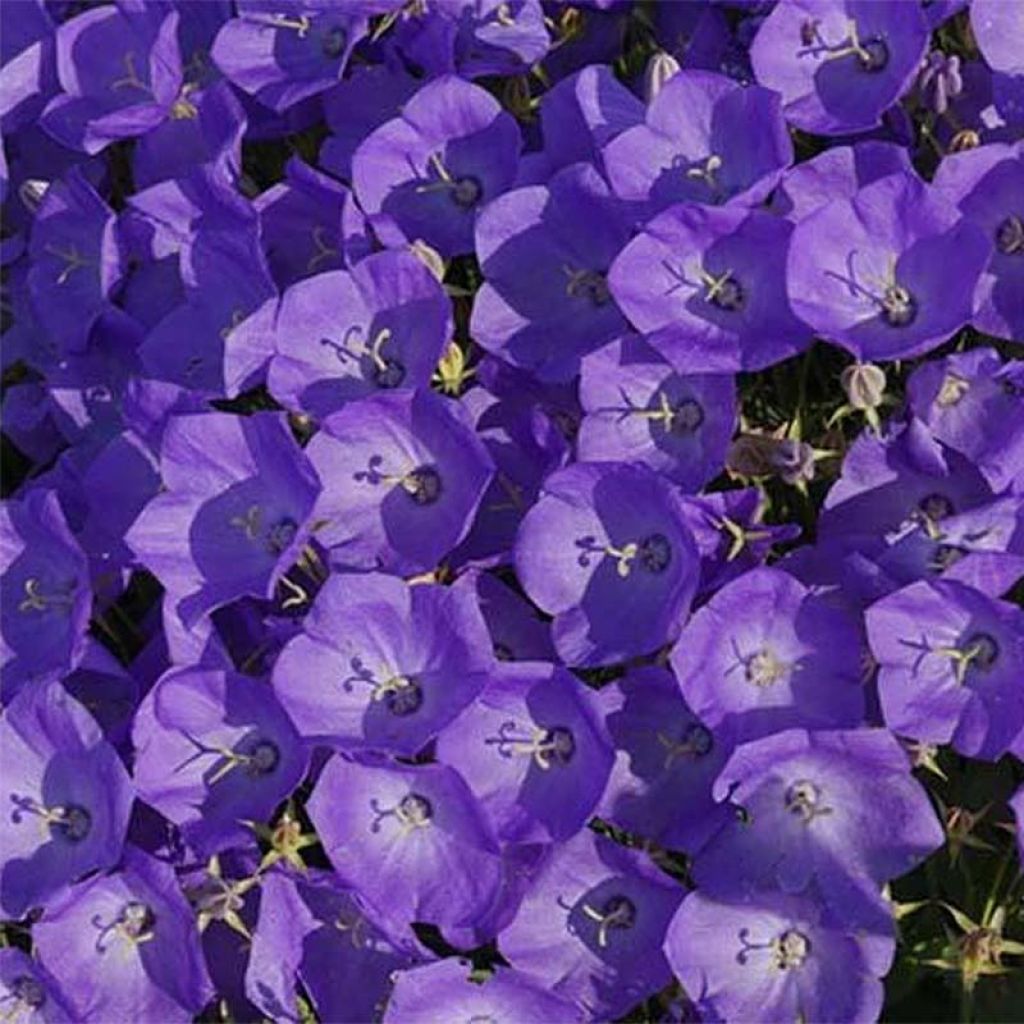

Campanula carpatica var. turbinata Karl Foerster
Campanula carpatica var. turbinata Karl Foerster
Campanula carpatica var. Turbinata Karl Foerster
Tussock Bellflower
6 young plants out of 8 have recovered well. But 4 were completely devoured by slugs. The flowers of the remaining 2 are magnificent. I fully intend to replant them next year.
Valéry, 27/06/2021
This plant carries a 12 months recovery warranty
More information
We guarantee the quality of our plants for a full growing cycle, and will replace at our expense any plant that fails to recover under normal climatic and planting conditions.
From €5.90 for pickup delivery and €6.90 for home delivery
Express home delivery from €8.90.
Does this plant fit my garden?
Set up your Plantfit profile →
Description
Campanula carpatica 'Karl Foerster' is an old variety of Carpathian bellflower that remains unmatched in terms of robustness and longevity. This small creeping plant also charms with its long summer flowering in the form of widely open lavender bells facing towards the sky which are particularly large for the species. They bloom throughout the summer with vibrant green foliage, which will be more or less evergreen depending on the severity of the winter. Very hardy and undemanding, this perennial is ideal in rockeries and borders, on top of walls, and for ground cover under roses.
Campanula carpatica belongs to the family of Campanulaceae. It is native to central Europe, and more specifically the Carpathian Mountains where it grows in limestone scree, up to an altitude of 2500m (8202ft). It is a mountain plant that likes contrasting climates but not dry situations.
The 'Karl Foerster' variety is identical in nearly all respects to the species but has larger flowers. It is a low-growing plant, reaching around 20 to 30 cm in height when in flower, with a spread of at least 30 cm (12in). It eventually forms large carpets of vegetation close to the ground. Its basal leaf rosettes spread without theoretical limit through branching and creeping stems called stolons, which root upon contact with the ground. Flowering occurs from June to August, in the form of well-opened bells, a deep blue-mauve measuring over 5 cm (2in) in diameter. The foliage is semi-evergreen in winter, very bright and shiny green, composed of heart-shaped, rounded, and highly toothed leaves.
Campanula carpatica Karl Foerster likes moist, light, and even chalky soils, but it dislikes stagnant moisture that can cause root rot. This mountain plant does not like overly hot climates or excessively dry summers. It is mostly a plant for rockeries and borders which will quickly fill cracks in paving and walls. It is also perfectly suited for a wild garden. It adapts very well to container or pot cultivation, in light and well-drained substrate.
Report an error about the product description
Campanula carpatica var. turbinata Karl Foerster in pictures


Flowering
Foliage
Plant habit
Botanical data
Campanula
carpatica var. Turbinata
Karl Foerster
Campanulaceae
Tussock Bellflower
Cultivar or hybrid
Other Campanula - Bell Flower
Planting and care
The Carpathian Bellflower appreciates moist soils that are not too dry, even light and chalky, but it dislikes stagnant humidity that causes its roots to rot. It requires well-drained soil, still slightly moist to thrive. You can plant it in non-scorching sunlight, or in partial shade, sheltered from strong winds that dry it out. This mountain plant does not like climates that are too hot or summers that are too dry. Watch out for attacks from slugs and snails in the spring. They can destroy a young plant that is not yet well established. Use organic solutions... or adopt toads that enjoy eating slugs and snails!
Planting period
Intended location
Care
-
, onOrder confirmed
Reply from on Promesse de fleurs
Summer flowering perennials
Haven't found what you were looking for?
Hardiness is the lowest winter temperature a plant can endure without suffering serious damage or even dying. However, hardiness is affected by location (a sheltered area, such as a patio), protection (winter cover) and soil type (hardiness is improved by well-drained soil).

Photo Sharing Terms & Conditions
In order to encourage gardeners to interact and share their experiences, Promesse de fleurs offers various media enabling content to be uploaded onto its Site - in particular via the ‘Photo sharing’ module.
The User agrees to refrain from:
- Posting any content that is illegal, prejudicial, insulting, racist, inciteful to hatred, revisionist, contrary to public decency, that infringes on privacy or on the privacy rights of third parties, in particular the publicity rights of persons and goods, intellectual property rights, or the right to privacy.
- Submitting content on behalf of a third party;
- Impersonate the identity of a third party and/or publish any personal information about a third party;
In general, the User undertakes to refrain from any unethical behaviour.
All Content (in particular text, comments, files, images, photos, videos, creative works, etc.), which may be subject to property or intellectual property rights, image or other private rights, shall remain the property of the User, subject to the limited rights granted by the terms of the licence granted by Promesse de fleurs as stated below. Users are at liberty to publish or not to publish such Content on the Site, notably via the ‘Photo Sharing’ facility, and accept that this Content shall be made public and freely accessible, notably on the Internet.
Users further acknowledge, undertake to have ,and guarantee that they hold all necessary rights and permissions to publish such material on the Site, in particular with regard to the legislation in force pertaining to any privacy, property, intellectual property, image, or contractual rights, or rights of any other nature. By publishing such Content on the Site, Users acknowledge accepting full liability as publishers of the Content within the meaning of the law, and grant Promesse de fleurs, free of charge, an inclusive, worldwide licence for the said Content for the entire duration of its publication, including all reproduction, representation, up/downloading, displaying, performing, transmission, and storage rights.
Users also grant permission for their name to be linked to the Content and accept that this link may not always be made available.
By engaging in posting material, Users consent to their Content becoming automatically accessible on the Internet, in particular on other sites and/or blogs and/or web pages of the Promesse de fleurs site, including in particular social pages and the Promesse de fleurs catalogue.
Users may secure the removal of entrusted content free of charge by issuing a simple request via our contact form.
The flowering period indicated on our website applies to countries and regions located in USDA zone 8 (France, the United Kingdom, Ireland, the Netherlands, etc.)
It will vary according to where you live:
- In zones 9 to 10 (Italy, Spain, Greece, etc.), flowering will occur about 2 to 4 weeks earlier.
- In zones 6 to 7 (Germany, Poland, Slovenia, and lower mountainous regions), flowering will be delayed by 2 to 3 weeks.
- In zone 5 (Central Europe, Scandinavia), blooming will be delayed by 3 to 5 weeks.
In temperate climates, pruning of spring-flowering shrubs (forsythia, spireas, etc.) should be done just after flowering.
Pruning of summer-flowering shrubs (Indian Lilac, Perovskia, etc.) can be done in winter or spring.
In cold regions as well as with frost-sensitive plants, avoid pruning too early when severe frosts may still occur.
The planting period indicated on our website applies to countries and regions located in USDA zone 8 (France, United Kingdom, Ireland, Netherlands).
It will vary according to where you live:
- In Mediterranean zones (Marseille, Madrid, Milan, etc.), autumn and winter are the best planting periods.
- In continental zones (Strasbourg, Munich, Vienna, etc.), delay planting by 2 to 3 weeks in spring and bring it forward by 2 to 4 weeks in autumn.
- In mountainous regions (the Alps, Pyrenees, Carpathians, etc.), it is best to plant in late spring (May-June) or late summer (August-September).
The harvesting period indicated on our website applies to countries and regions in USDA zone 8 (France, England, Ireland, the Netherlands).
In colder areas (Scandinavia, Poland, Austria...) fruit and vegetable harvests are likely to be delayed by 3-4 weeks.
In warmer areas (Italy, Spain, Greece, etc.), harvesting will probably take place earlier, depending on weather conditions.
The sowing periods indicated on our website apply to countries and regions within USDA Zone 8 (France, UK, Ireland, Netherlands).
In colder areas (Scandinavia, Poland, Austria...), delay any outdoor sowing by 3-4 weeks, or sow under glass.
In warmer climes (Italy, Spain, Greece, etc.), bring outdoor sowing forward by a few weeks.






































